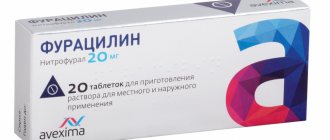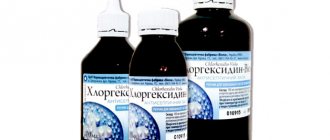How to rinse your mouth after tooth extraction
Removal of a tooth
– an unpleasant but necessary surgical operation.
It is prescribed when the tooth
can no longer be saved.
Removal
usually does not last long, a couple of minutes, after the anesthesia has taken effect. However, after the intervention, especially if we are talking about the sixth, seventh or eighth tooth (also called wisdom teeth), the wounds remain large and deep and sometimes take a long and difficult time to heal. Therefore, in order not to introduce an infection into the postoperative space and not to provoke inflammation, you need to help yourself, you need to behave correctly.
What not to do after tooth extraction
During the first time after tooth extraction
absolutely
not allowed
:
- Touch the wound hole
with toothpicks, hard bristled brushes and other foreign objects. - There are fermented milk products. This is an excellent breeding ground for bacteria to grow.
- Go to the gym, swimming pool and bathhouse, including the sauna.
- Drink something hot and warm the wound with something.
- Chew on the side of the mouth where the tooth was removed.
- Smoking.
Indications
If the tooth extraction was planned, it did not hurt, there was no purulent discharge, then there is no point in rinsing. In a healthy person with a strong immune system, overgrowth occurs on its own, without additional manipulation.
The main indication for performing such a procedure is the order of the surgeon who performed the removal. When pus is found in the hole during extirpation, the doctor prescribes medications and explains how to make oral baths.
Rinsing will be beneficial and promote speedy healing in the following cases:
- Inflammatory phenomena - if the tooth was very painful before, there was swelling, pulsation or an increase in temperature - these are signs of the accumulation of purulent exudate.
- Periostitis - when, simultaneously with tooth extraction, an incision was made on the gum due to “flux”.
- Decayed teeth - if there are carious lesions and other sources of infection in the mouth, then rinsing will protect the hole from infection.
Thanks to rinsing, pathogenic microorganisms die, but you should always remember that such manipulation should be gentle and, hiding behind the imaginary benefits, not cause even more harm.
What to do after tooth extraction
As mentioned above, wounds heal especially difficult after removal
teeth sixth seventh and eighth teeth.
The gums hurt and bleed
, sometimes for a long time and profusely.
However, it is better not to touch the wound for the first two days - a blood clot should form, which will promote healing and delay the infection. Unpleasant sensations can be relieved with painkillers. Sometimes during this period, dentists advise taking antibiotics to eliminate the inflammatory process. Two days after tooth extraction,
you need to start rinsing the wound. This will also facilitate the restoration processes in the gum tissue.
Soda-saline solution for gum inflammation
Expert opinion
Advice!
Infection in the wound, accompanied by inflammatory processes, is a reason to use a more aggressive agent. The combination of regular salt and NaHCO3 will stop the spread of infection, get rid of accumulations of pus, and relieve pain.
The first manipulations are unpleasant - the composition causes pain, so after using the product, rinse your mouth with plain warm water.
Preparation of the product, recipe:
- Mix salt (15 g), sodium bicarbonate (15 g).
- Pour warm water (200 ml) into the bulk mixture.
- Stir until the salt crystals completely disappear (they can cause irritation and damage the tissues of the oral cavity).
Rinse without vigorously rolling the liquid. Leave the solution on the affected area for a few seconds.
Recommended for you:
How to use soda solution for medicinal purposes and for prevention, professors’ methods
Repeat the procedures 3-6 times a day. If after manipulation the blood clot begins to wash out and break down, reduce the number of procedures. Additionally, using brilliant green or iodine for cauterization is prohibited - this will lead to the formation of a burn to delicate sensitive tissues.
What to rinse with?
Keep in mind that you don't need to literally rinse your mouth.
, and arrange a therapeutic bath for the wound left
after tooth extraction
. So eliminate the efforts that create seething, so as not to damage the first healing processes.
- First aid
in this case is a solution of a teaspoon of salt and the same amount of soda in a glass of warm water. They are in every home. This rinse should relieve pain and disinfect the wound hole. - At the Pharmacy
you can always stock up on furatsilin to disinfect a sore spot. The solution requires one tablet per glass of water. A solution of chlorhexidine (0.05%) or miramistin is also suitable. The latter remedy also has a good analgesic effect. All medications are very inexpensive.
Many anti-inflammatory and disinfectant herbs, as well as those that have a healing effect, are suitable from your grandmother’s herbalist They are prepared in approximately the same way - cook a little for 15 minutes in a water bath, strain, cool and rinse. Chamomile, calendula, sage and eucalyptus are better suited than others, and it is better to use all at the same time in equal shares. You can also use St. John's wort, oregano and pine needles.- If
swelling
occurs the tooth was removed , then briefly apply ice to the sore spot and rinse the hole with soda and furatsilin. - If the pain occurs after removing the nerve of the tooth
, then rinsing with propolis infusion and the same soda solution, but with a few drops of iodine, helps a lot.
If after several days the pain does not subside, the bleeding does not stop, and any additional unpleasant symptoms arise, you should definitely seek help from a dentist. Another piece of advice: if you know that you have poor blood clotting, notify the surgeon about this and ask him to sew up the wound, having first put the medicine in the hole. This will facilitate and speed up the healing of the gums.
Sodium bicarbonate rinse
Baking soda is a substance often used to disinfect wounds. Dentists recommend performing manipulations only when removing a purulent tooth. Inflammatory processes occurring in the oral cavity are another reason to resort to an effective composition.
Soda recipe:
- Boil water (220 ml), cool to room temperature, hot liquid will reduce the effectiveness of NaHCO3.
- Combine warm liquid, sodium bicarbonate (15 g).
- Stir until all grains of powder disappear.
- Use immediately, reheat if necessary.
Rinse carefully - if you experience pain, simply hold the prepared liquid near the wound. Cotton wool soaked in soda will help stop the inflammatory processes - place a small swab on the site of the extracted tooth and leave for a quarter of an hour.
You should not exceed the recommended procedure time - NaHCO3 will begin to corrode the tissue, causing additional complications.
Properties and benefits of soda for teeth - the principle of action of mouth rinse
Baking soda will help relieve toothache.
Baking soda does not have a negative effect on tooth enamel. A rinsing composition based on it has the following beneficial properties:
- has an antiseptic effect, eliminating pathogenic microorganisms;
- whitens the surface of teeth;
- relieves pain;
- makes breath fresh;
- reduces the severity of the inflammatory process.
Important! A composition with a weak concentration of soda can be used even during the period of teething in infants. To relieve pain, this product is lubricated on the gums and tongue.
Water with soda dissolved in it has a pronounced antiseptic effect and also suppresses pain. This product is non-toxic and safe for teeth and mucous membranes of the oral cavity.
Types of solutions
Other components can be added to a basic solution of baking soda and water to enhance effectiveness.
List of different recipes containing baking soda:
| Compound | Cooking method |
| Soda-salt | You need to take 200 ml of warm water and 10 g of baking soda and kitchen salt. Combine everything and mix thoroughly. Rinse your teeth and mouth three times a day. The solution blocks the proliferation of pathogenic bacteria, heals microtraumas and ulcers, and prevents the deposition of tartar. |
| Soda with iodine | For 200 ml of warm water, take a teaspoon of soda and 6-8 drops of iodine (5%). Connect the components. You should rinse your mouth with this solution every three hours. The maximum allowable period of treatment in this way is 5 days. A solution with iodine has an antimicrobial and healing effect, as well as an analgesic. |
| With added sage | Rinsing your mouth and teeth with a soda solution can be combined with a sage-based decoction. To prepare it, take a tablespoon of dry raw materials, brew 200 ml of boiling water, let the broth brew and cool, then strain. Rinse every 30 minutes to an hour. |
Preparation method
The soda solution should be prepared correctly.
Please note that for each mouth rinse procedure, you need to prepare the product anew. The product should be prepared only with warm water: hot liquid can harm the mucous membranes.
To prepare it, you need:
- boil water, cool it to a temperature of 36 degrees;
- pour a teaspoon of soda into a glass of water (200 ml);
- Stir the liquid thoroughly so that there is no sediment left at the bottom.
The finished product must be used immediately after preparation. If the toothache is very severe, you can increase the amount of soda in proportion to two teaspoons. But in this case, you should act with extreme caution: soda can corrode soft tissue.
Contraindications
No need to rinse:
- if less than 24 hours have passed since surgery;
- if there was no medical prescription;
- with a sanitized oral cavity and a good state of the immune system, rinsing will do more harm than good;
Neglecting the doctor’s recommendations can cause consequences:
- Bleeding from the socket that occurs repeatedly.
- Development of inflammatory processes such as osteomyelitis and alveolitis.
- Suppuration of the soft tissues that surround the tooth.
This explains why and in what cases it is better not to rinse your mouth after removal.
Benefits and harms
The benefits of treating the mouth and teeth with soda solution were mentioned above. However, this remedy also has negative sides. These include:
- the possibility of vomiting as a reaction of receptors to an irritant;
- overdrying of the mucous membranes of the esophagus and stomach (with frequent use of the solution);
- the possibility of developing an allergic reaction;
- fluid retention in the body, which is associated with the high salt content in soda.
Before using a soda solution, you need to make sure that there are no allergic reactions to its main component.
How to rinse your mouth: step-by-step instructions
Whether it is necessary to rinse the mouth after removal, the dental surgeon will tell you after completing this unpleasant procedure. If such recommendations have not been received from him, then you should not engage in amateur activities, so as not to worsen the process of tightening the hole.
After a difficult removal, when purulent contents (a lump with pus on the gum) are obtained from the resulting wound, the doctor may recommend irrigation of the oral cavity. It is important to remember that you just need to hold the solution in your mouth without actively rinsing the contents of the well.
- Prepare a rinse solution. The liquid should be at room temperature or slightly warm. There is no need to dilute the finished pharmaceutical drug, unless otherwise recommended by the manufacturer's instructions.
- Pour 15-20 ml of solution into a measuring cup.
- Pour the liquid into your mouth and hold it without making active movements. For better penetration into the wound area, tilt your head to the side where the problem tooth was located.
- Hold in your mouth without swallowing for 1-2 minutes.
- Spit out the contents from your mouth. There is no need for additional ablution with water.
Any appointments should be carried out after meals. In the next hour, it is better not to drink or eat, so as not to wash off the remaining active components of the solution.
The frequency of procedures is usually 3-4 times a day. After conducting a control inspection a few days later, the dental surgeon will advise you to stop or continue rinsing.
Category: Tooth extraction Published by Mister stomatolog











